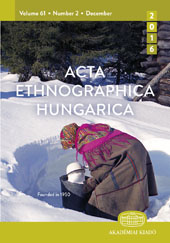György Martin’s place in applied ethnochoreology
György Martin’s place in applied ethnochoreology
Author(s): Colin QuigleySubject(s): Theatre, Dance, Performing Arts, Music, Cultural Anthropology / Ethnology, Methodology and research technology, Social Theory, Sociology of Culture
Published by: Akadémiai Kiadó
Keywords: traditional dance; applied ethnomusicology; applied ethnochoreology; participatory dance revival; presentational choreographic representation; applied ethnochoreology; György Martin; Ernő Pesovár;
Summary/Abstract: Apart from a few key works on dance structure, improvisation and Central European traditional dance, the breadth and depth of Martin’s work remains inaccessible to the English reading audience and little known in dance studies. One such unacknowledged area of significant contribution is his important work in applied ethnochoreology through key interventions in Hungarian presentational stage choreography and participatory social dance revival. In both spheres Martin made a significant contribution at key moments in their development. At least two fundamental concepts drawn from his theoretical work informed his activist interventions. First, that folk dancing needs to be conceptualized, and studied, as a process (táncfolyamat). Second, that this process cannot be excised from its complete contextualization in the lives and history of its practitioners if it is to be fully understood. This theorization of dance is relevant far beyond the village dance idiom that so absorbed him. It should be more widely known, acknowledged and, indeed, applied specifically within ethnochoreology as well as dance studies in general today. As work in the application of scholarly knowledge outside the walls of academia becomes ever more important in our field, it is worth remembering that this is not an activity without precedent. Martin’s theoretically informed interventions in both participatory and presentational dance practices in Hungary provide an excellent model for such work.
Journal: Acta Ethnographica Hungarica
- Issue Year: 60/2015
- Issue No: 1
- Page Range: 111-120
- Page Count: 10
- Language: English
- Content File-PDF

